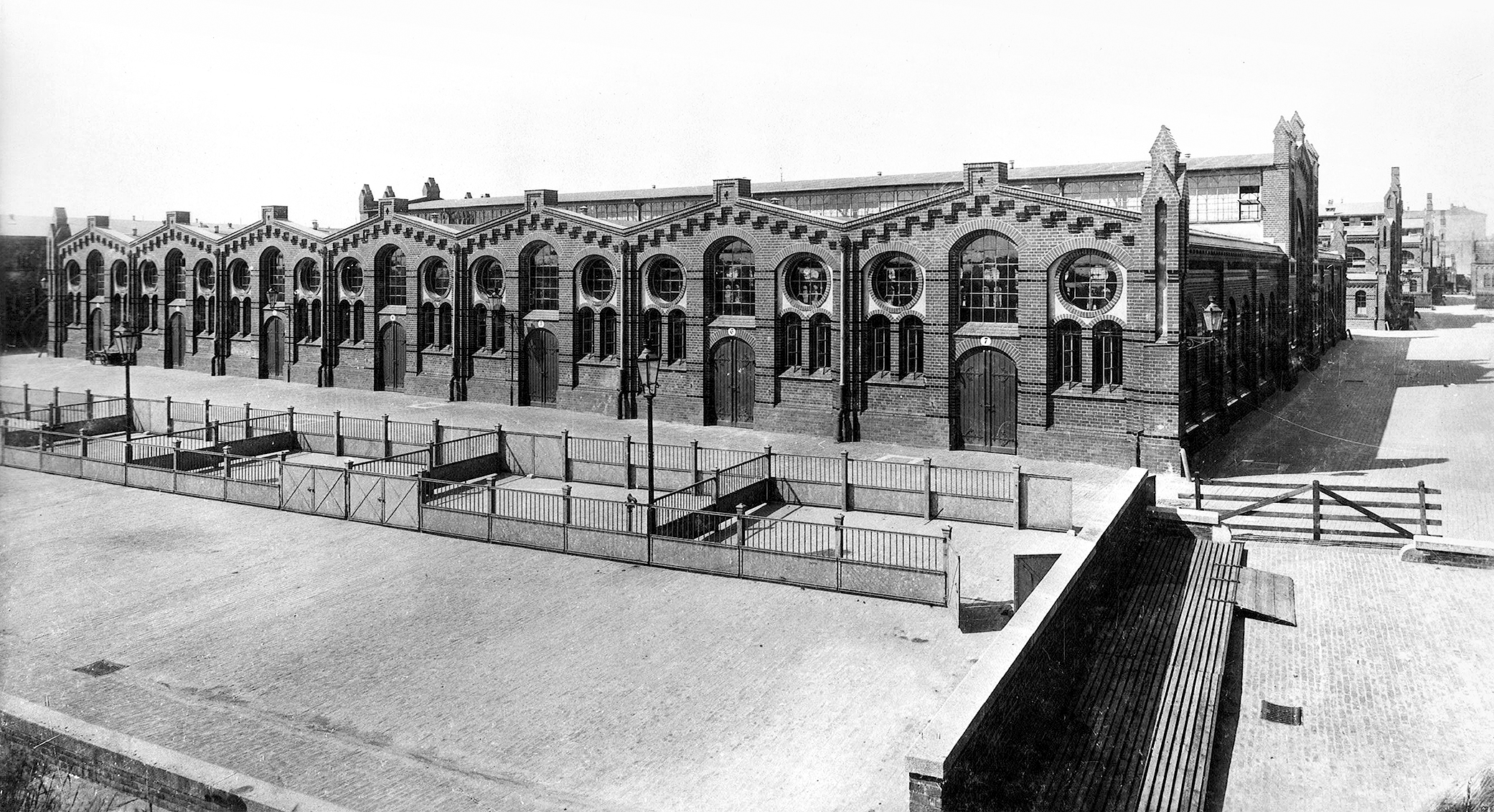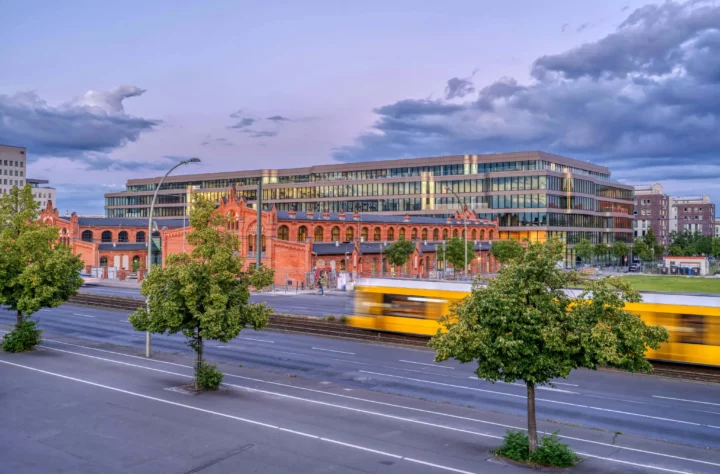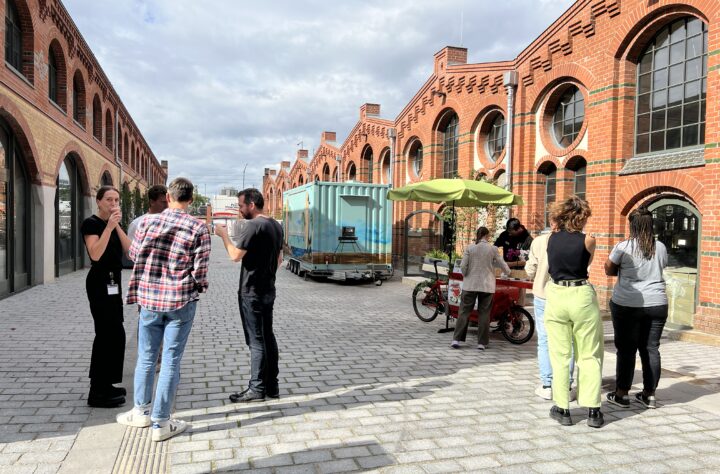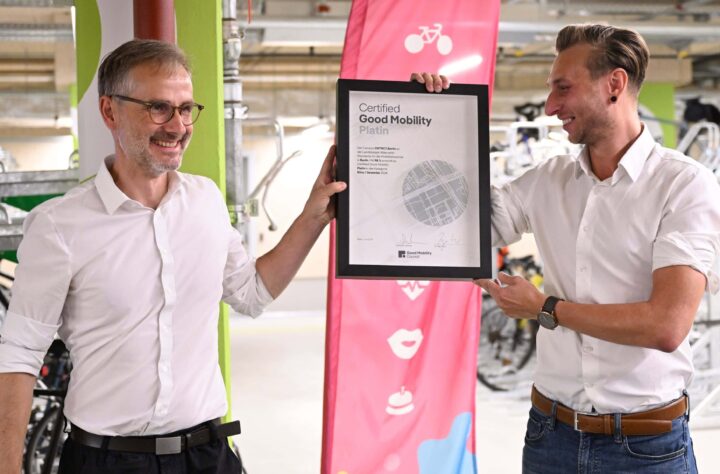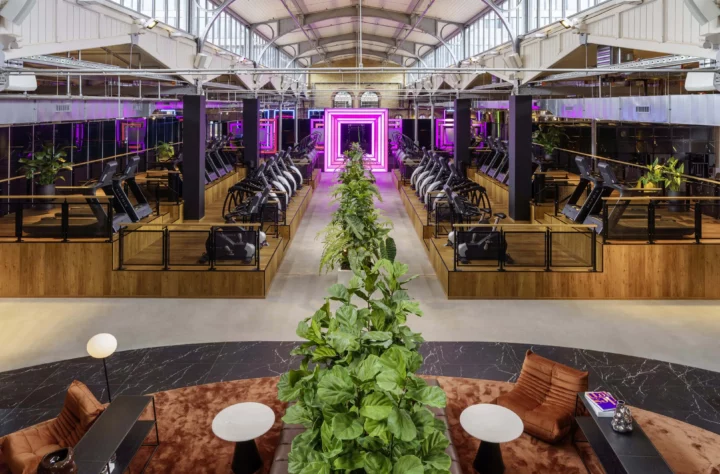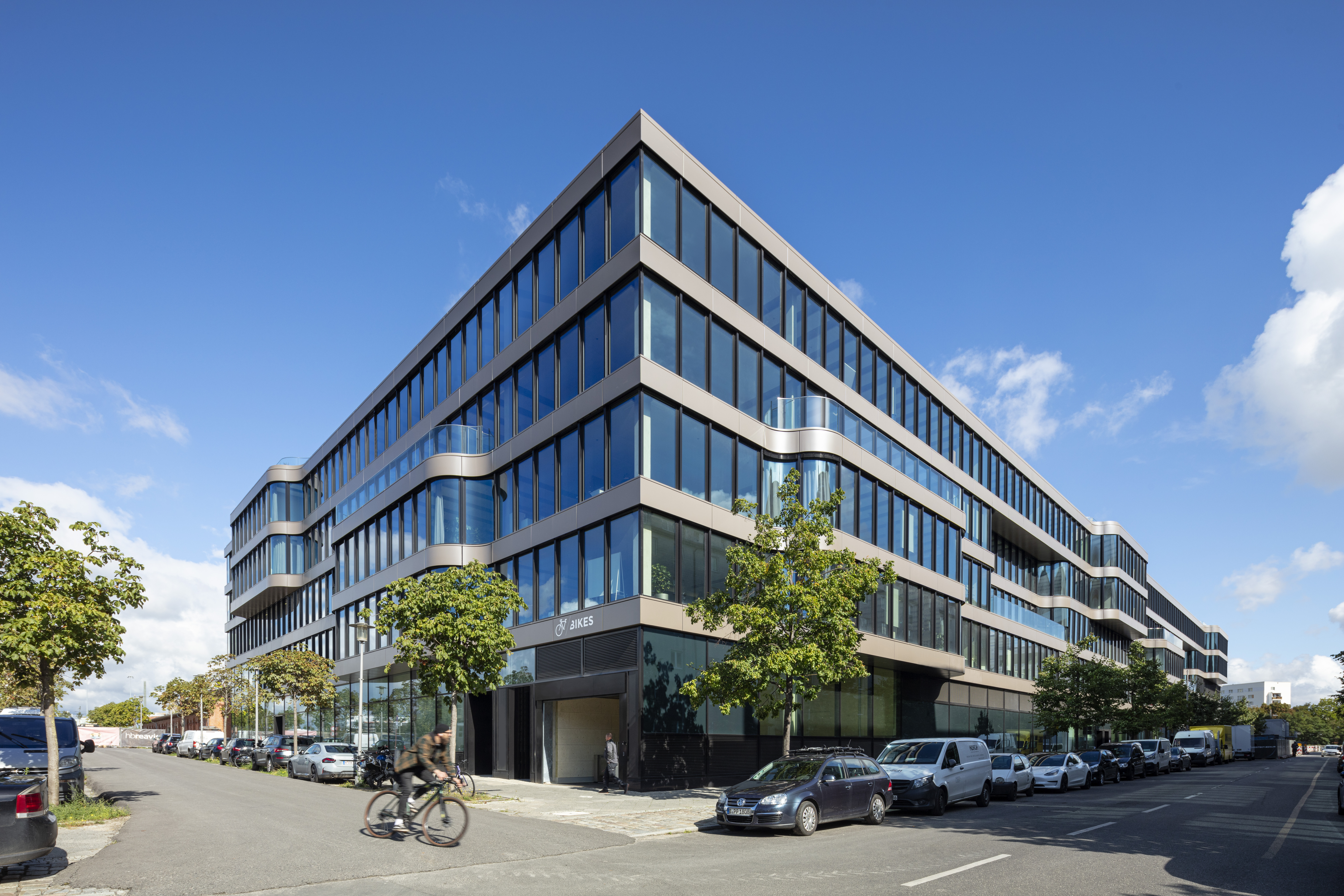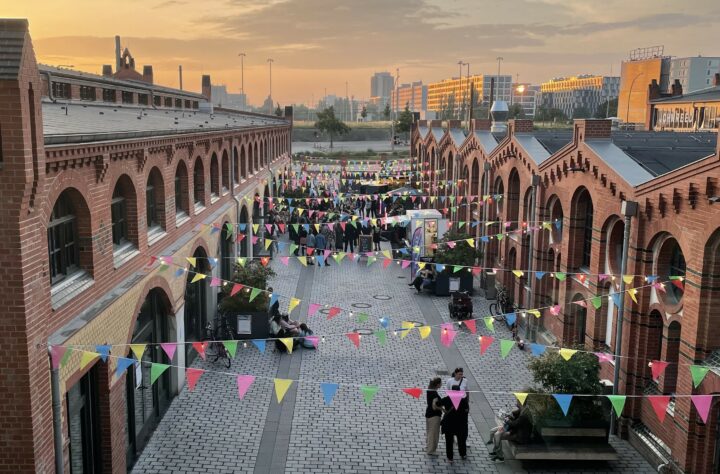Focus: Human and animal health.
The Berlin Central Livestock and Slaughterhouse works much faster and more efficiently than the approximately 800 private slaughterhouses that were previously spread throughout the city. Above all, the centralisation allows for more comprehensive hygiene and health checks. For example, each animal is examined externally upon arrival. If infectious diseases are suspected, the animals are quarantined in the epidemic house and – if the suspicion is confirmed – slaughtered separately in the police slaughterhouse and disposed of.

Animal and human health was the highest priority. For example, the almost 3,000 square metre sales hall was separated from the livestock market for hygienic reasons and had its own railway connection. In addition, the cows, sheep, mutton and other animals were housed separately in numerous buildings with additional compartments as well as separate entrances, which could be closed and cleaned separately in the event of an outbreak of disease.
The livestock and slaughterhouse were clearly separated spatially in accordance with the disease protection rules. Tissue samples of all slaughtered animals are examined microscopically for trichinae in the inspection office by about 300 employees and officials and only released for sale if they pass the test. In the boiler house, the offal is cleaned for further processing and inferior meat is boiled off to be sold at discounted prices through the affiliated free-standing bank.
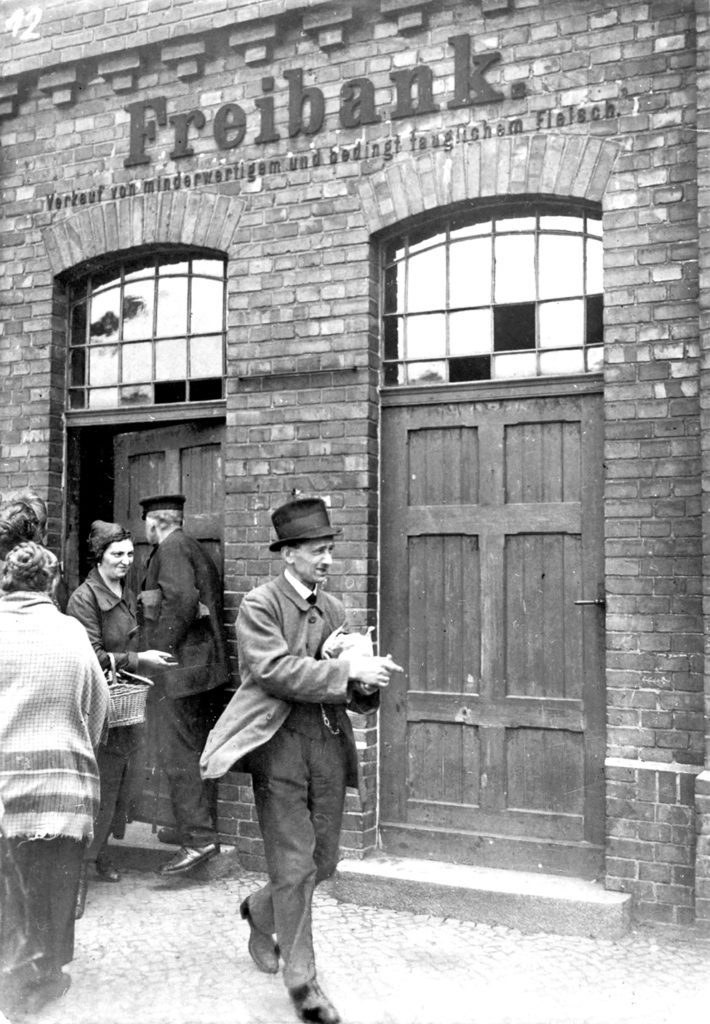
“Plagues are rather attributes of society, products of the wrong culture or of culture not spread to all classes; they point to deficiencies produced by state and social design.”
Robert Virchow, 1849
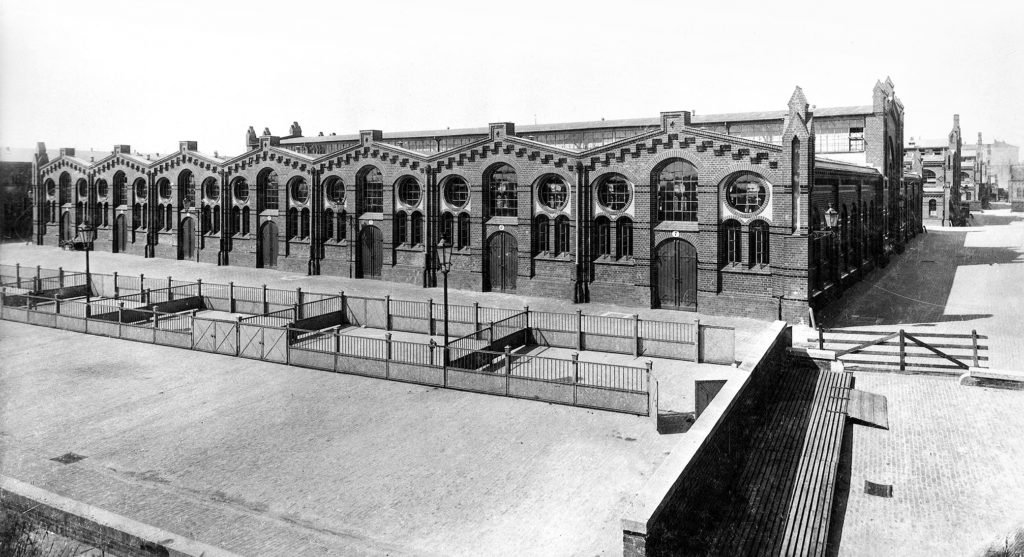
Part 4 of the 6-part series on the history of the DSTRCT.Berlin is dedicated to the topic “Berlin is growing. Business is booming.” and we will publish it here on our website in a few days. So stay curious.
Missed a part? No problem. Read here:
